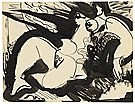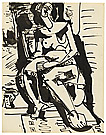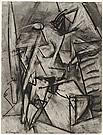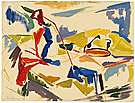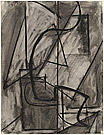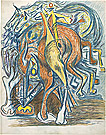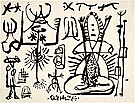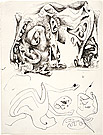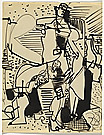Introduction
The great American painter Jackson Pollock was born in 1912, as was the second- generation Abstract Expressionist Morris Louis. To mark these anniversaries, the National Gallery of Australia showcases its holdings of important paintings, drawings and prints. The collection is significant in national and world terms, and a symposium is planned to accompany the display.
Abstract Expressionist art is vibrant and still surprising, even after a century dominated by the genius of Matisse and Picasso. Without Abstract Expressionism modern art and contemporary painting would be very different. The National Gallery s strong holdings of Pollock, Louis and their contemporaries, and other painters associated with Colour Field painting and the New York School, will also feature. Most works were acquired in the 1970s, before the National Gallery opened, and several recent acquisitions build on the strengths of this early collecting.
Pollock s Blue poles, one of his most famous paintings, and the earlier Totem lesson 2 accompany six drawings and six etchings by him, rarely on public view. Paintings and works on paper by Willem de Kooning, Mark Rothko, Arshile Gorky and Lee Krasner will also be on display, along with three paintings by Louis and an early work by Helen Frankenthaler-in commemoration of her death in December 2011. Key works by Philip Guston, Hans Hofmann, Robert Motherwell and Clyfford Still elucidate the dynamic connections between artists.
The impact of these influential and unique painters stretched far and wide. Extraordinary Australians such as Tony Tuckson and Peter Upward show how these artists developed in related and complementary ways. Over four galleries, this festival of Abstract Expressionism offers a fascinating journey through the National Gallery s holdings, as well as a rare opportunity to experience the quality and depth of the collection.



